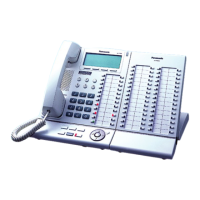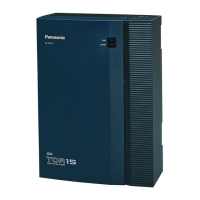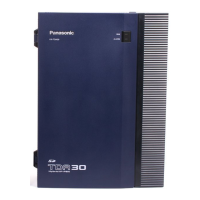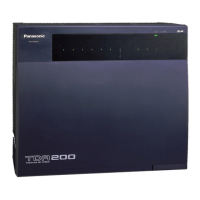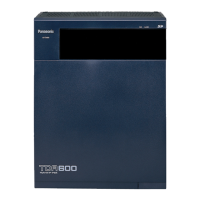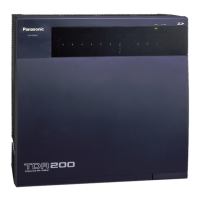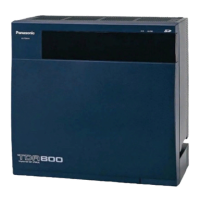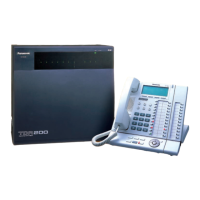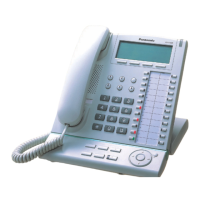Light pattern Status
Off The monitored extension is idle.
Red on The monitored extension is busy or has set DND for CO line calls.
[Example Network]
PBX-1
Network ID 1
PBX-2
Network ID 2
2001 (busy)
2002 (idle)
4001 (idle)
PBX-3
Network ID 0
PBX-4
Network ID 3
Extn. 2001
Extn. 2002
Extn. 4001
1001 (busy)
Extn. 1001
Extn. 2002
Monitor extension
Monitor
extension
[Programming Procedure]
1. Routing Table Assignment
TIE Line Routing and Modification tables must have been programmed in advance for all PBXs in the
network, to allow calls to be made and transferred between PBXs (® 13.1.13 PRIVATE NETWORK
FEATURES).
In
the programming example that follows, the PBXs in the network use the Extension Number method, as
shown in the illustration above. However, the PBX Access Code method can also be used.
2. Network PBX ID Assignment
Assign a Network PBX ID to each PBX in the network.
11.2 [9-2] Network Data Transmission—
Network Data Transmission for Centralized Operator Feature
—Network PBX ID
• IDs 1-8: Can monitor extensions at other PBXs, and transmit monitor data about local extensions. Each
ID number can be assigned to one PBX within the network.
• ID 0: Retransmits monitor data throughout the network. This ID number can be assigned to multiple
PBXs.
3. QSIG Port Setting [Monitored PBX]
ISDN-QSIG (PBX Direct Connection)
Each QSIG port of a PRI card that will be used to transmit extension status information must be set to do
so through system programming. Even if a port is set to not transmit information, it will still receive
information from other PBXs.
3.14 [1-1] Slot—Port Property - PRI Port (KX-TDA100/KX-TDA200/KX-TDA600 only)—CO Setting—
Networking Data Transfer
Document Version 2010-11 Feature Manual 249
13.1.15 Private Network Features—NDSS (Network Direct Station Selection)

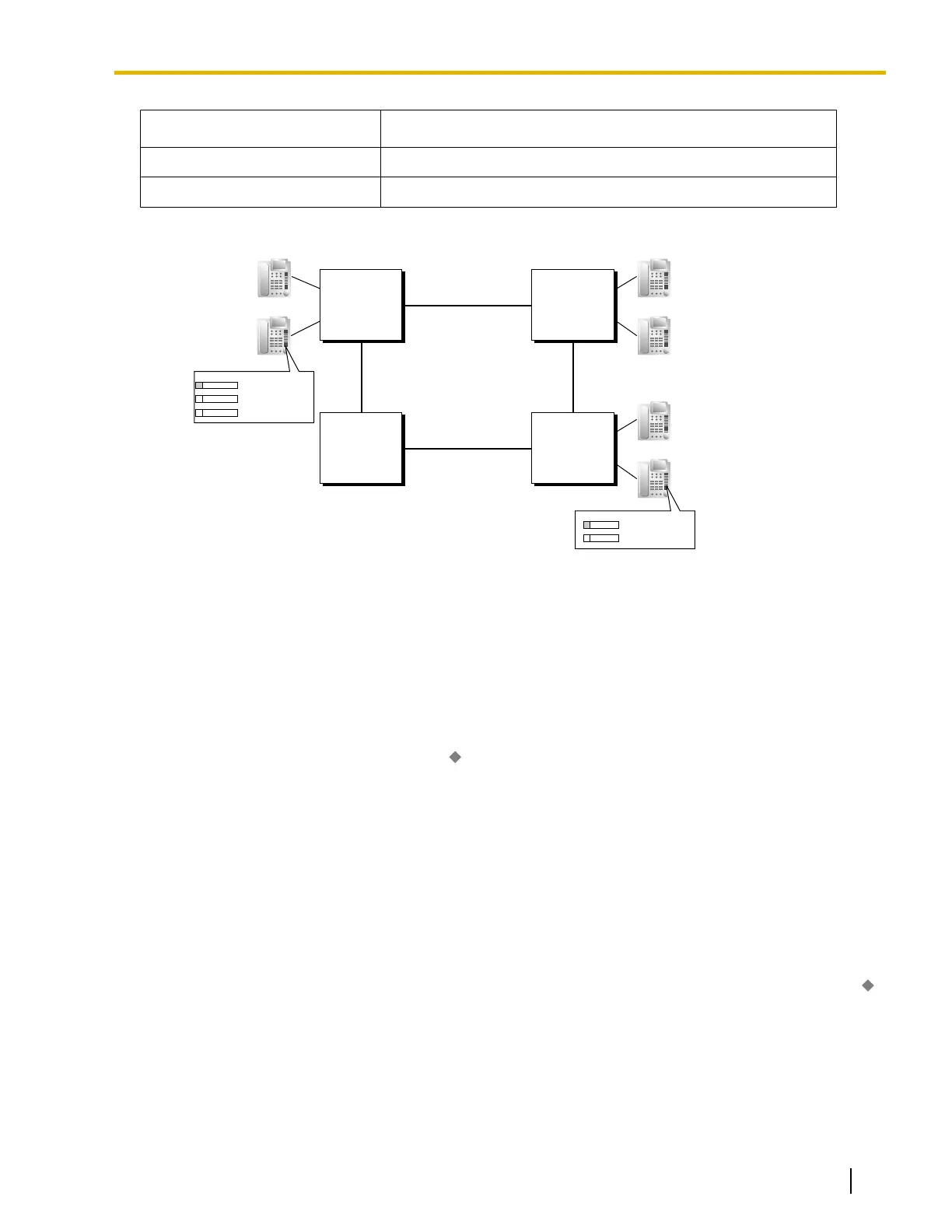